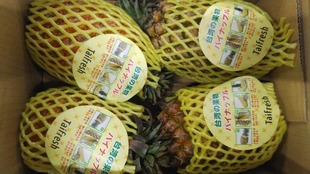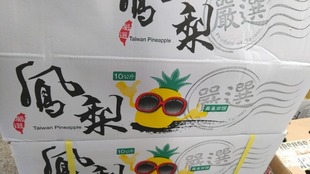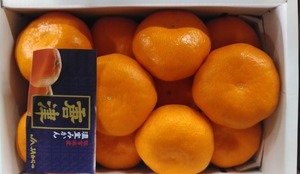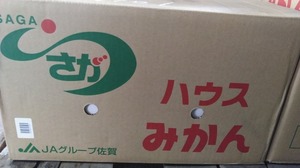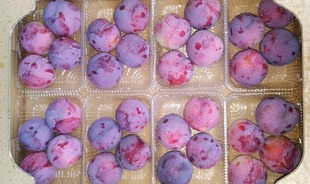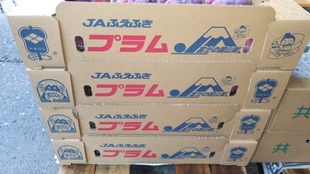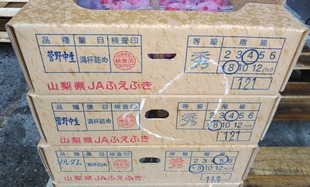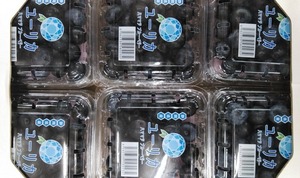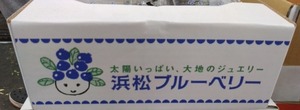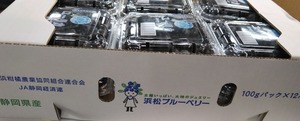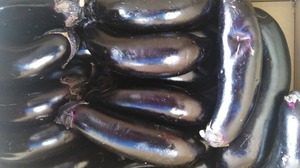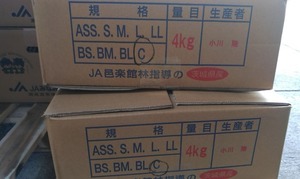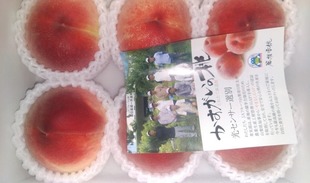From among Shizuoka Prefecture's diverse and high-quality agricultural, forestry, and fishery products, we carefully select products with values and features that can be proud of throughout the country and overseas, based on the prefecture's own certification standards. The word "summit'' expresses high quality with the image of the summit of Mt. Fujisan, the highest in Japan, and also has the meaning of "receiving'' the blessings of the earth with gratitude.
【Product name】
Konta
【Type】
Fortunella Swingle
【Producing area】
Shimizu Ward, Shizuoka City, Shizuoka Prefecture (Shizuoka Food Selection)
【Origin of name】
Yasufumi Kondo happened to discover(H2)a branch change of Meiwa kumquat (fortunella crassifolia). Named after the discoverer "Kon", a new brand is born.
【Major features】
What is Shizuoka Food Selection? From among the diverse and high-quality agricultural, forestry and fishery products of Shizuoka Prefecture, products with value and features that can be proud of nationally and internationally are carefully selected based on the prefecture's own certification standards and are called "Shizuoka Foods." Accredited as a selection. In order to increase recognition, the new nickname "Top of head" and the logo mark were formulated. "Itadaki" expresses high quality with the image of Japan's highest peak of Mt. A system to certify, based on Shizuoka Prefecture's own standards, products with value and characteristics that can be proud of nationally and internationally from among the diverse and high-quality agricultural, forestry and fishery products of Shizuoka Prefecture. In 2022, the certified citrus fruits are “Nishiura Mikan”, “Jutaro Premium Gold” (JA Fuji Izu Nansun District), “Honzo Aoshima Honare”, “Mika Ace”, “Mikkabi Mikan (Aoshima)” (JA Mikkabi). , "Prime (Wase, Aoshima)" (JA Topia Hamamatsu), "Maruhama Katayama Mikan", "Maruhama Grapefruit" (Maruhama Citrus Ren), "JA Izu Taiyo New Summer Orange", "JA Izu Taiyo Cold Wind amanatsu (Citrus natsudaidai) )”, “JA Izu Taiyo House Mikan”, “Izu no Haru” (JA Fuji Izu Izu-Taiyo area), “Konta”, “Harumi” (JA Shimizu), “Suruga Elegant” (JA Shizuoka City). Konta is a kumquat found in Shizuoka City. It's very sweet and the skin is soft, so you can eat it deliciously like a candy. Shizuoka's "Konta Kumquat" is the highest quality product. In recent years, various greenhouse kumquats, such as the Miyazaki Prefecture 'Kinkan-Tamatama' brand, have been shipped from various production areas and are well known, but in fact, most of them are called 'Ninpo kumquats' (Fortunella crassifolia: an evergreen member of the genus Kumquat of the Rutaceae family, native to China long ago). It is a variety of the shrub "Kumquat" and is also called Neiha Kumquat. It is self-fertile and seems to produce fruits on a single tree. It is a representative variety, and it seems that most of the fruits are commercially available for eating raw. Fruit It is spherical and weighs about 10 to 16 g. It has few spines, is cold-resistant, and is said to be easy to grow." This "Konta Kumquat'' was discovered as a branch of the "Ningbo Kumquat'' and was registered as a variety in 2002. Cultivated only in Shizuoka Prefecture, it seems that quality is maintained by thorough temperature control in the greenhouse. "Konta Kumquat", which has a different personality from its appearance, has few oil sacs, and the skin is smooth to the touch and the texture seems to be familiar with the body. In addition, kumquats have a smooth appearance with very few oil sacs on the peculiar outer skin, which is the source of the bitterness of kumquats. A merchant ship of Qing dynasty (China, 1644-1912) was distressed during the Edo period. Calling at Shimizu Port is the beginning of Japan's introduction. At that time, the sailor seemed to be taken care of by the residents. As a thank-you gift, we presented the people of Shimizu with candied kumquat. When I planted the seeds, seedlings were produced and fruits were born. Eventually, it spread all over Japan and seems to have become popular. “Konta Kumquat” was born in Shimizu Ward, the land of origin. Did you know that there are various delicious kumquats all over Japan now? Introduced products are emerging with a sweetness of 20 degrees or more. It’s very sweet and can be eaten from the skin. It is still very rare because it is cultivated only in Shizuoka prefecture. In addition, the condition that the varieties that can be shipped is limited to those cultivated in the facility. Thorough temperature control in the greenhouse: Protecting from ainy and wind does not put a load on the soft pericarp. I also heard that it grows into beautiful fruits with no scratches and gloss. It also has properties different from those of mandarin oranges, such as making flowers bloom many times until it bears fruit. Larger fruits are considered by consumers to be luxury products. Therefore, fruit thinning is a very important task. Large fruit-Even from outside the house, producers can see the vivid fruit. As mentioned before, grow on the tree until the sugar content is 20 degrees or more. The condition is ripe shipping, the standards are really strict, and you can see the goodness of the product. This is a specialized variety characteristic: Perform a sugar content test with sample fruit, judge by the degree of coloring, and harvest. Also, wait for some time to increase the sugar content. Therefore, the period of circulation tends to be slower than that of general kumquat. That's all for my opinion and what I've heard from the people involved. From the variety registration of the Ministry of Agriculture, Forestry and Fisheries. Application number: 11653, application date: 1999/03/29, publication date: 1999/11/08. It is a kumquat that matures in early to mid-February in the cultivation area (former Shimizu City, Shizuoka Prefecture (currently Shimizu Ward, Shizuoka City)) with slightly light fruit weight and dark orange skin color. The tree is upright, small in size, and weak in vigor. The thickness of the shoots is thick, and the internode length and the number of thorns are medium. The shape of the leaf blade is spindle-shaped, slightly wavy, the size of the blade is extremely small, the leaf length is short, the width of the leaf blade is extremely narrow, and the visibility of the reticular veins is unclear. There is no winged leaf shape, the petiole length is short, and the thickness is medium. The inflorescence is solitary, the weight of the flower (floral bud) is very light, the shape of the petal is spindle-shaped, the length is very short, the width is very narrow, the color is white, the number is 5, and the filaments are separated. The degree is united, and the amount of pollen is medium. The shape of the fruit is globose, the fruit shape index is small, the shape of the apex is depressed, and there are no radial grooves or concave rings. Fruit heart is dense, size is medium, weight of fruit is slightly light, skin color is dark orange, oil sac is medium size, density is fairly sparse, unevenness is flat, fruit surface is rough and smooth. It is extremely smooth, the thickness of the pericarp is thick, the pericarp ratio is maximum, and the difficulty of peeling is difficult. The hardness of the funnel membrane is medium, the shape of the capsule is short, the size is very small, and the color is orange. Juice is little, sweetness is high, sourness is very low, aroma is little, number of seeds is small, and number of embryos is many. The budding and flowering periods are very late, and the maturity period is rather early, beginning to mid-February in the cultivated area. The biennial fruitiness is low, the occurrence of floating peel and fruit cracking is absent, and the storability is short. Compared to 'Ninpo kumquat', it is said that it can be distinguished from others by its smooth fruit surface and thick skin. Registration number, 10249, registration date, 2002/06/20, duration of breeder's right, 25 years. Variety registrant, Mr. Yasushi Kondo: Kashio, Shimizu Ward, Shizuoka Prefecture, registered breeder. Ingredients that are as sweet as Grape and Melon and naturally soften. It is truly a treasure of Shimizu Ward. Qingshui District, Shimizu Ward, Shizuoka: It became popular with the development of Shimizu Port(Frozen tuna boasting the largest catch in Japan(Scomber thynnus L.)), Whitebait caught in Suruga Bay, Lucensosergia lucens(Hansen(丁), 1922) etc.)and prospered as a post town(Okitsu inn Station (Shimizu Ward, Shizuoka City, Shizuoka Prefecture (formerly Shimizu City: Since ancient times, Seikenji Temple (Kyotozan Kiyomikokoku Zen Buddhist monastery Temple of the Rinzai sect Myoshinji branch) Kiyomi-Seki at the bottom of the mountain has played a role in preparation for the Bando region, and since the Kamakura period, the Okitsu clan has ruled it. In 1843, there were 2 troop headquarters, 2 sub-honjins, 34 hatago (type of Edo-period inn for travelers), 316 lodging houses, and a population of 1,668. Was the place for travelers to take a break after crossing the pass, and for those traveling east, it seems that it was a place to get dressed in order to cross the difficult part of the pass and reach Yui inn. From Okitsu, Minobu and Koshu-kokan (Minobu Road), which leads to Kofu, branched off. During the middle and late Edo period, it was a distribution center for Japanese paper produced in the Okitsu River basin. After the Meiji era, the villas of Meiji veterans such as Hirobumi Ito and Kaoru Inoue were built here, and it is known nationwide as a "winter resort''. Kinmochi Saionji (1849-1940), who built Zagyosou, is said to have been visited by so many dignitaries that it was called "Okitsu pilgrimage". Also, in recent years, it has been attracting attention as a town that laid the foundation for the bean paste manufacturing industry.)) , Ejiri inn Station (Shimizu Ward, Shizuoka City, Shizuoka Prefecture (formerly Shimizu City)).)on the Tokaido("Tokaido Gojusan-eki no zu," "Tokaido, TSUTAYA version" (Hiroshige UTAGAWA): Kambara inn Station (Shimizu Ward, Shizuoka City, Shizuoka Prefecture (formerly Kambara Town, Ihara County)). Famous for producing tea and mandarin oranges, it is one of the leading rose producing areas in Japan. As a port town overlooking Mt. Fuji, we aim to create vitality and liveliness(Culture City of East Asia. Mihonomatsubara: Sand spit existing in Shimizu Ward, Shizuoka City, Shizuoka Prefecture.). In Shimizu city center around JR Shimizu Station and Shizutetsu New Shimizu Station, there is a concentration of living functions, tourism functions (a famous tourist spot), disasters such as earthquakes and tsunamis (e.g. (local governments); Disaster Countermeasures Basic Law, 1961). Act No. 223 of November 15), in order to protect the national land and the lives, bodies and properties of the people from disasters, the basic principles of disaster prevention were established, and the necessary systems were established through the national government, local governments and other public institutions. In addition to clarifying where responsibilities lie, comprehensive and planned disaster prevention is established by establishing disaster prevention plans, disaster prevention, emergency disaster response measures, disaster recovery and disaster prevention financial and financial measures, and other necessary disaster countermeasures. The purpose is to improve and promote administration, thereby contributing to the maintenance of social order and the securing of public welfare. Shizuoka City, Shizuoka Prefecture (Shimizu Tanabata-matsuri: The Tanabata Festival celebrates the legendary meeting of the deities Orihime and Hikoboshi; which are represented by the stars Vega and Altair.) former Shimizu City (present Shimizu Ward) area. Reizanji Temple(Founded in the Nara period:(Abe)the seven forms of Avalokitesvara; Gyoki Heian Period)Temple (Shizuoka City) - A Shingon sect old / new interpretation school temple located in Shimizu Ward, Shizuoka City, Shizuoka Prefecture. The Battle of Sattatoge (also referred to as the Battle of Mt. Satta) was a battle fought between the troops of Takauji ASHIKAGA and Tadayoshi ASHIKAGA at Sattatoge (Satta-toge Pass) in Suruga Province (Shimizu Ward, Shizuoka City, Shizuoka Prefecture) in December 1351, during the period of the Northern and Southern Courts. However, Tadayoshi was successively defeated at battles including those at Mt. Satta in Suruga Province (Shimizu Ward, Shizuoka City, Shizuoka Prefecture) and the mouth of Haya-gawa River in Sagami Province (Odawara City, Kanagawa Prefecture) before being disarmed in Kamakura. On September 26, 2022, Shimizu Ward in Shizuoka City suffered water outages due to sediment and driftwood clogging water facilities due to record-breaking rain caused by Typhoon No. 15. In order to prioritize securing water for domestic use, it seems that many people were absent from work at JA's agricultural product shipping facility. It seems that the influx of earth and sand has made it difficult to harvest citrus and strawberries in greenhouses and orchards. It is still fresh in our minds that the roads leading to farmland were cut off in various places, and there was concern about the impact on future harvesting operations. Shizuoka City's location environment and agriculture: In addition to the concentration of various industries such as manufacturing and service industries, Shizuoka City is located almost halfway between the two major metropolitan areas of the Tokyo metropolitan area and the Kansai area. The transportation infrastructure is also substantial. In addition, the climate is warm and rainy throughout the year, and the plains rarely snow even in winter. Against the backdrop of the blessed location and weather conditions, Shizuoka City agriculture. Unique agriculture is being developed, such as garden farming and outdoor / institutional cultivation of vegetables and flowers. "Okushizu" : The mountainous area (middle mountainous area) where rich nature remains is called "Okushizu" (Oku Shizuoka). Here, people lead a leisurely life, producing agricultural products such as tea and wasabi, processed products, and high-quality wood. Or, historical culture such as customs and festivals peculiar to the region, beauty such as terraced rice fields and tea plantations. Many of the beautiful landscapes still remain, and they seem to bring us peace and healing. "Shizu-mae" : The coastal area of Shizuoka City seems to be called "Shizu-mae" (Shizuoka's foreshore). In this area, fresh seafood from Suruga Bay is landed, creating a food culture unique to Shizuoka City.

Konta kumquat was developed in 1990 by Kondo of Kashio, Shimizu Ward, Shizuoka City, when he discovered a change in the branch of "Ninpo Kumquat". The endocarp, which is unique to kumquats, is very thick, or rather, most of the volume is the endocarp, and the rest is only the thin skin and the seeds wrapped in it. This endocarp is extremely sweet, and since there is no pulp at all, there is no sour taste that irritates the tongue, and you can feel a sweet honey-like taste.


Around 1996 or 1997, Konta Kumquat consulted with a teacher at the Shizuoka Prefectural Experiment Station, and it was decided that kumquats would be the most promising citrus produced in a greenhouse. It started with planting 400 trees in the house. It seems that the branch change that came out 4 years later is the beginning. I registered the seeds and seedlings, and I'm up to now. In addition, since that time, the new year's shipping crop type for greenhouse-grown kumquats has been controlled by late-stage covering and low-temperature cultivation from November to the harvest period. It seems that it was.
